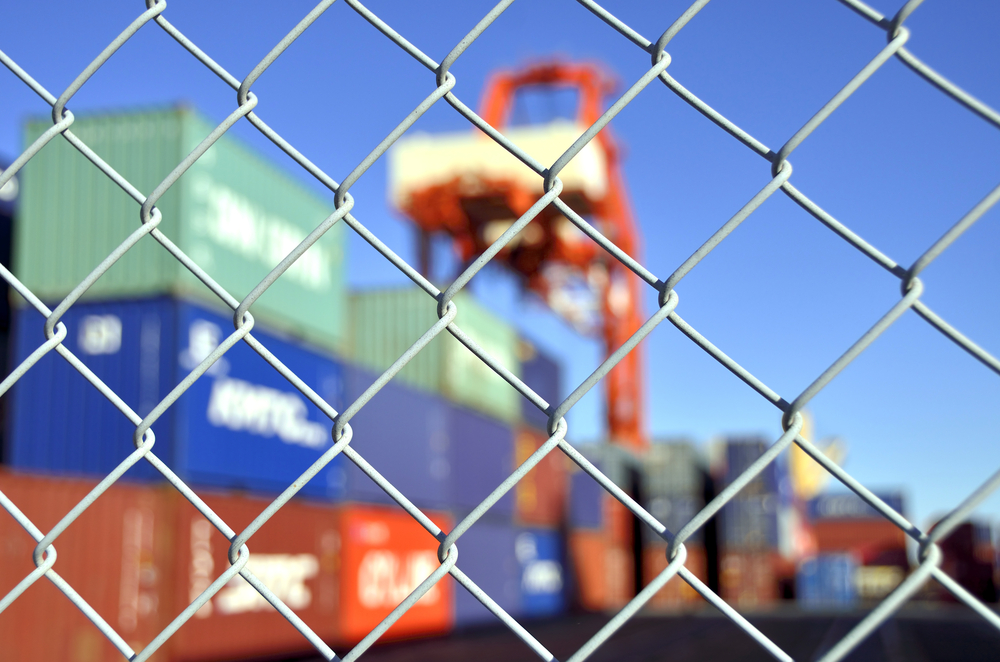
Whether it is a good old Lamborghini or a collector's Bentley, classic cars have their own place in the hearts of automobile enthusiasts. Jaguar, Mustang, Corvette, Rolls-Royce, Lamborghini, and Bentley are some of the most iconic names in this line, but they are miles away from covering the whole picture.
If it's old and unique enough, it's a classic!
They come in all shapes, colors, and sizes, from muscle cars to sedans to sports racers, but they are rare. Thus even a single scratch can ruin them for you. This is exactly what a car enthusiast worries about when deciding on shipping their classic vehicle overseas.
In this guide, we'll show you how you can ship your classic car overseas without worries.
Let's get started!
Some Considerations For Preparing Your Car

Before you begin your search for a logistics services company to handle your car during overseas shipping (unless you plan on transporting it by air – but it applies in either case), you'll have to handle a couple of things yourself:
Cleaning
First, start by cleaning the exterior and interior of the vehicle thoroughly. This also includes the undercarriage, which may have some deposits of mud or soil (this will most likely make the car inadmissible in the destination country due to biosafety reasons). For the undercarriage, steam cleaning may be needed.
You'll also have to dispose of any biosafety concern from inside the vehicle, i.e., used tissue papers, face masks, and so on. Make sure that none of your personal possessions, especially items of value (okay, this may have sounded a bit odd in the context of a classic car, but still), are inside the vehicle.
Have Enough Gas, But No More Than That
For transport, you'll need to ensure that your car has just the right amount of gas in it, but no more than that. A general rule of the thumb is to fill up the car's gas tank by ¼ or a quarter of its full capacity.
Avoid leaving the tank bone-dry since that will create problems for you.
But the same is also true for fully filling the tank, which will simply raise the total weight of your shipment and thus the shipment cost.
Have Your Car Inspected
Next, you must get an expert on board, unless you're an expert yourself, and have them thoroughly inspect your vehicle. Tire air pressure, belts, gaskets, vehicle health, emission standards (for compliance with the country being imported), and other details must be scrutinized.
Record The State Of The Car
Then you can do a little inspection of your own too, but this will be more superficial, i.e., your job is to find any dents, scratches, and other marks on your vehicle, even the tiniest ones. This way, you'll be able to record the state of your car (note it down) and be able to compare it when you receive it at your new place in your shipment.
You should also photograph every angle of your ride for more tangible evidence in case your car is damaged somehow during the shipment.
Take Off Removable Ornamentation
If your ride has some ornate objects that come off, it is best that you do take them off before you ship your vehicle. You should have your vehicle in its base form, stripped of all removable ornamentation before you ship it to avoid any damage to the same.
Documents
The documentation requirements vary from country to country. You'll have to log into the customs website of the state you plan on shipping your car to get a list of the required documents. But some quintessential paperwork includes:
- Title of the car
- Vehicle registration documents
- Driver's license
- Invoice/bill of sale detailing the specs and price of the car
- Lading/freighting bills
- Insurance documents
- Customs forms (if shipping overseas)
Car Shipping Options

The next step is to select the most suitable car shipment option for your vintage car; there are three main options in this regard, and your budget, above all other things, will dictate your choice. The more you pay, the faster and safer your option will be:
Roll-on, Roll-off Shipment: This is the simplest of all the methods listed; it involves driving the vehicle onboard the shipment vessel, transporting it under the open sky, and then driving it off-board upon arrival. For this reason, it is also dubbed as "open-air shipment." There are some requirements here, firstly, your vehicle must be operational, and none of your personal belongings should be inside the vehicle when you ship it. While this is the cheapest shipment solution, it does not guarantee any additional safety.
Container Shipping: This option, in contrast, involves a sealed container that shields the car from any damage, and you can also keep your possessions inside the vehicle in this case. Once the shipment arrives at the destination port, the container is off-loaded and then stored in a wharf or warehouse until it is opened; then, your car is delivered as per your instructions.
Air Freight: This is only for those who're in a hurry to get their vehicle to wherever they're headed. The same principle applies here like that to overseas transport, just replace a sea-voyage with air travel and jack up the prices accordingly.
Choose Where You'd Like Your Car To Be Delivered

You have the option of having your car delivered from door to door, i.e., the shipping company will pick up your vehicle from your current location and ship it overseas to your new place. This will save you lots of hassle but will cost more.
If you're on a tight budget, you could simply drive your vehicle to the departure port, whichever is nearer to your original location, and receive your shipment at the destination port. It's either some extra payment or extra effort – the choice is yours!
Post Shipping Processing

Just a couple of more stages and you'll be free to drive your classic car in the new country:
Customs Clearance
After import processing of your shipment, your car will make its first stop at the customs department of the country being imported to. The policies differ, but these departments' basic goals are the same throughout – they need to verify that the vehicle you've imported is valued accurately so that it can be taxed accordingly.
Here's what you can ensure to smoothen the process:
- Have all the necessary documents
- Make sure that your paperwork is completely up to date
- Check for any errors or omissions in your documents and have them corrected beforehand
- In case of tax exemption, provide the necessary documents to avoid paying VAT and customs duties
If you don't qualify for a tax exemption, you'll have to pay a percentage in VAT or value-added tax and a sum for customs duties.
Inspection
Your car will then be inspected for compliance with import regulations in their country.
To ace this stage, make sure that:
- Your car is completely clean, inside out
- Your ride has no faults or defects (brakes are working fine, no fluid leaks, and so on)
- Your vehicle produces safe levels of emissions, as per the requirements of the country
- Your vintage car meets other import regulations or at least can be modified to do so
In most cases, however, the import regulations for classics are not very strict.
Apply For Vehicle Registration
Following this, your car will be released, and you'll be able to apply for registration with the local authorities. This is compulsory unless you have imported the vehicle for a short term. After the payment of the VAT and customs duties, registration should not take long.
And then, you can drive your car on the streets without fear!






 Share on Facebook
Share on Facebook Share on LinkedIn
Share on LinkedIn Share on Twitter
Share on Twitter




 Google
Google  Instagram
Instagram  Trustpilot
Trustpilot 



